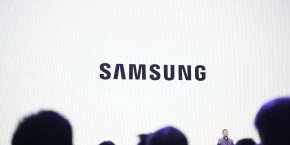Acer’s C710. A bigger, thicker battery and more RAM (compared to Pixel and Samsung Chrombooks)
I’m an Apple snob – I’ve been using MacBook Pros and Airs almost exclusively for over a decade – in fact, it has gotten so bad that I can barely use or figure out Windows anymore. I often find the experience with anti-viruses, updates and crapware infuriating to the point where I’m no longer curious what happens in the Windows world.
On the other hand, I never have a problem jumping on a Chromebook (or Box) because it is almost exactly like using a browser in a desktop OS. That makes using Chromebooks quick, easy and productive for me. I liked the cheap, ARM-based Samsungs and loved the decked out Pixel even though I’m still not able to give native apps up entirely (Twitter, Skype, iTunes, etc keep pulling me back). But for a second computer to use as either as a backup or special occasion device or for light computer users, I wholeheartedly recommend Chromebooks.
Acer initially had a bad rep in their Chromebook department because the initial offerings seemed to be repurposed Windows netbooks (and the problems that come along with them – including little RAM, bad battery life, HDDs instead of SSDs and cramped plastic-y keyboards). To be fair, I’m going on a few minutes of use at a Best Buy and a bunch of online reviews for those assumptions.
Last month, I finally got my hands on the updated Acer ‘C710-2055’ version which has a 50% bigger battery pack than earlier models, 4 GB of RAM, and an Intel Celeron 847 processor. The price was also bumped to $279 from $199.
So, $80 later, does Acer have a compelling Chromebook here?
In a word: Yes.
Right from the start, this is a snappy machine. It boots up in just over 12 seconds which is super-fast for a glorified HDD-based Netbook. While the keyboard is still plastic, it works just as well as Samsung’s, though Acer sticks with the antiquated/legacy “CAPS LOCK” rather than the Chrome Search Key. The screen here is very nice and I’d put it above the Samsung for colors and angles but it is a little on the glossy side.
The extra batteries in this model aren’t tucked away inside the computer somewhere, they are actually put on the bottom of the previous pack, lifting the Acer into an angle on your desk. I had absolutely no problem with this, in fact there is a good reason that most standalone keyboards are angled this way, but it drops the devices portability factor significantly in both thickness and weight.
I have mixed feelings on the ports Acer chose to put on the sides of this machine. On one side you have VGA, HDMI, 100M Ethernet and a USB 2 port. On the other side, you have power jack, two more USB 2 ports, audio out, and a Kensington lock port. I’m not sure how many people will use Ethernet or VGA posts on a netbook but for the people who want these things, this is an important differentiating factor. I imagine some of the low budget places these things will reside may also have legacy VGA and Ethernet but that’s pure speculation on my part.
The speakers on the Acer are located on the bottom and are given some extra fidelity by the lift from the extra battery pack. I’d certainly rate these better than the Samsung Chromebook but not as good as the much more expensive Pixel.
As far as overall performance, the Intel still beats the ARM processor in Samsung’s Chromebook handily. This is especially true for video which seems pretty quick to start up on the Acer, probably equivalent to a base model MacBook Air. Samsung’s model is a generation or two behind because of the ARM processor.
The 320 GB hard drive is a double edged sword. On one hand that’s a lot of room for local media storage for movies, pictures and music. On the other hand, HDDs suck up a lot of juice, are slower and take up a lot more space. As SSD prices come down and people become more comfortable storing their stuff in the cloud, I think Acer will go with SSDs. But for now it is an important differentiating factor for those who want/need lots of local storage.
And how does that affect battery life? Well, Acer says 6 hours and possibly more for this machine, which is one hour less than Samsung’s. I’m usually happy if I can get 80% of the manufacturer’s estimates on battery life and that’s true here. I handily made it to 5 hours on a repeated basis. It is much improved over the previous model (which some folks reported not being able to make it through a sub two-hour feature length film) but still isn’t as good as Samsung or the Pixel.
Wrap-up
This is a nice budget machine and I have no problem recommending it. If Microsoft is going to drop the netbook in favor of ultrabooks, I think Google is smart to pick up the baton on the low end. The C7 is by no means a power-user’s dream but for those who want a second computer or for the grandparents and kids who just need to do web browsing, some word docs, email and the like, this is a great machine at $280. In fact, at $200 with the smaller battery pack and half the RAM, those on a serious budget will be hard pressed to find anything comparable.
For those who don’t need the marginal speed improvements, better screen, vast hard drive space, and VGA/HDMI/Ethernet, the thinner/lighter/slower $249 Samsung might also make a good choice.
Related articles
- Google bringing Chromebooks to more retails stores including Walmart & Staples (9to5google.com)
- Samsung to exit desktop computer business, signaling the end of Chromeboxes? (9to5google.com)
- New Google+ Photos app now available for Chromebook Pixel, coming soon to other Chrome OS devices (9to5google.com)

FTC: We use income earning auto affiliate links. More.



Comments